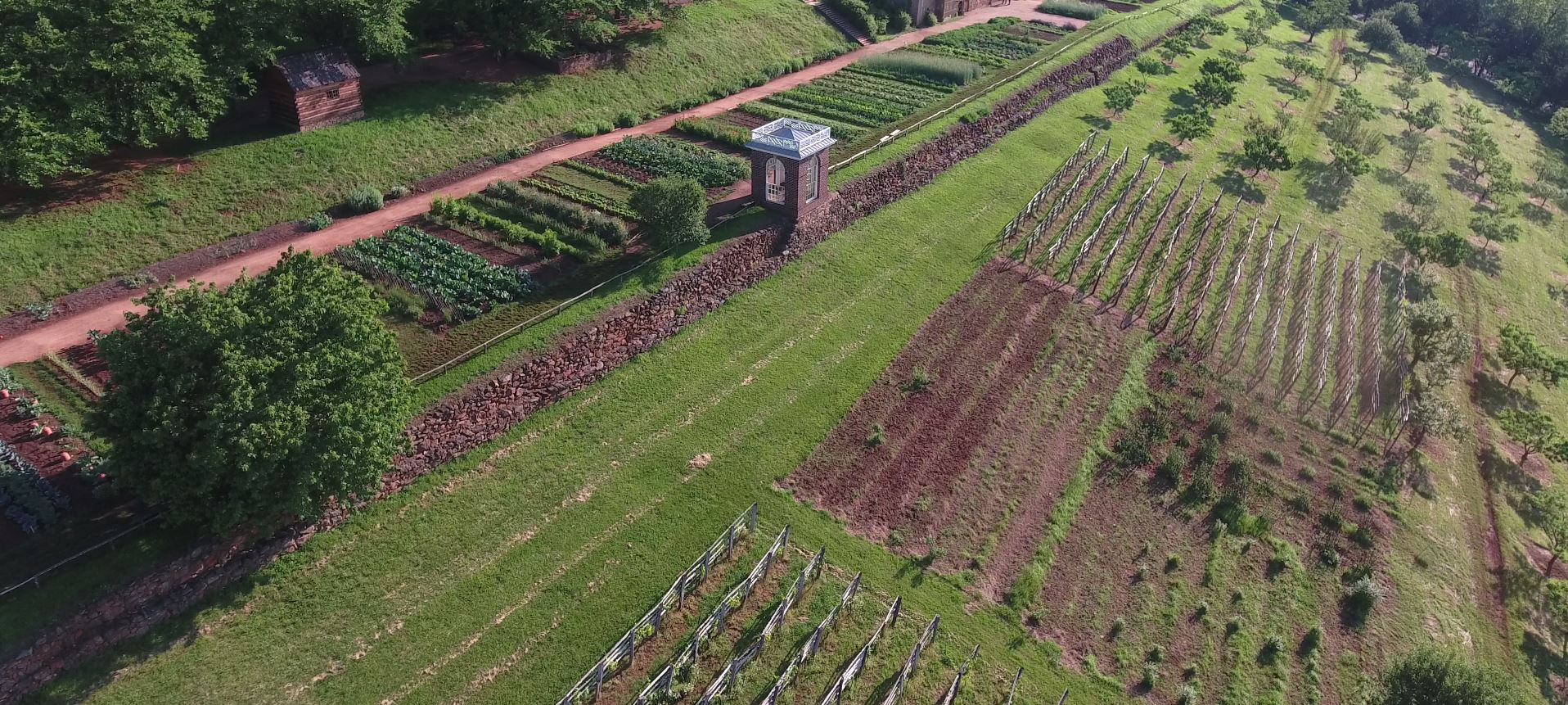Between 1769 and 1814 Jefferson had as many as 1,031 fruit trees planted in his South Orchard. This orchard formed a horseshoe-shape around the two vineyards and berry squares. It was organized into a grid pattern in which were planted eighteen varieties of apple, thirty-eight of peach, fourteen cherry, twelve pear, twenty-seven plum, four nectarine, seven almond, six apricot, and a quince.

The earliest plantings, before 1780, reflect the experimental orchard of a young man eager to import Mediterranean culture to Virginia, and included olives, almonds, pomegranates, and figs. However, the mature plantings after 1810 included mostly species and varieties that either thrived through the hot, humid summers and cold, rainy winters of central Virginia, such as seedling late-season peaches or Virginia cider apples, or else, Jefferson's favorite fancy fruits like the Spitzenburg apple. Many of Jefferson's trials with European fruit varieties were unsuccessful. For example, while two dozen plum varieties were planted during his gardening career at Monticello, by the 1811 the orchard contained only two plum trees. The restoration of the South Orchard began in 1981. This pages contains information about the peaches, apples, cherries, and other fruit trees grown at Monticello.
ADDRESS:
1050 Monticello Loop
Charlottesville, VA 22902
GENERAL INFORMATION:
(434) 984-9800
